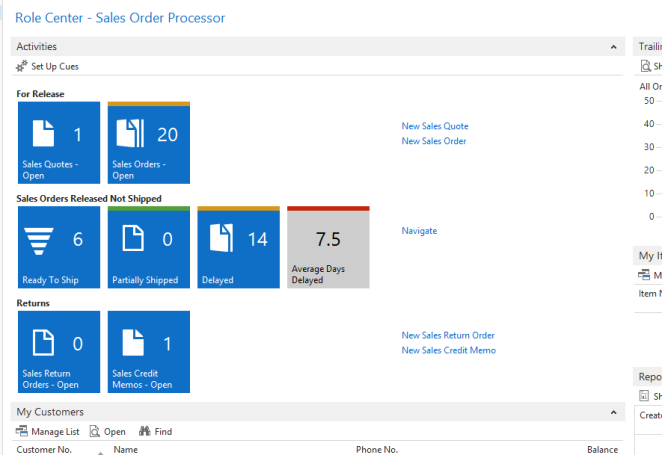Design Microsoft Dynamics Navision 2013R2 RDLC Report
What is RDLC Report?
The Report Definition Language (RDL) Data is a report component that is used by Microsoft Dynamics NAV to display the report in the Role Tailored client. Microsoft Visual Studio Report Designer is an external designer that is used to design the visual element (the RDL data) of a report. It is accessed from the Report Dataset Designer.
With the help of RDLC reports we can easily export the report result into Excel, PDF and Word formats. We can have interactive sorting, add links to another report or page, toggle the data, add map or chart in the report layout etc.
Use reports to print documents such as invoices, and to process data without printing.
For example, you can create a report that lists all customers and all orders that have been added by each customer. You can also create a report that is automatically filled with the relevant information for an invoice.
How to design report for NAV 2013?
The Visual Studio Report Designer provides a user friendly interface for creating robust reports that include data from multiple types of data sources.
- Design the report layout.
- Explain the concepts of grouping and totaling in a report.
- Create a grouping and totaling for a report.
- Two data item grouping.
- More than two data tem grouping.
- How to skip the child group on visual studio report.
- Types of Grouping
- Parent Group
- Child Group
- Adjacent Before
- Adjacent After
Designing the Visual Studio Report Layout
Designing MS Dynamics NAV reports layout in the Microsoft Visual Studio Report Designer.
Define data item and required field for the dataset on the Microsoft Dynamics Report Designer.
- Click view->Layout. Microsoft Visual Studio Report Designer opens with a dataset result from the report dataset designer.

- Drag a table control from the toolbox to design the report layout
Select the table control, right click and select the Tablix Property->General->Dataset name-> Dataset result. This connects the table to the dataset.
When you add a field from the dataset to the table, the table is automatically connected to the dataset.

- The layout now has a table with four columns.
- Type [@ No_Customer Caption] in the first column of the first row of the table or use the column headings instead of hard coded text, to support Multilanguage scenario.

Adding a group
a) Dataset result in Visual Studio Report Designer is flattened data. This means table1 (Salesperson/Purchaser) and table 2 (customer) are joined.
b) In the grouping panel at the bottom of the page click the row group arrow and click Add Group-> Parent Group.
c) The group properties window opens. Select “Group by” then select particular field (here I am selecting Salesperson code for the example), select “Add group header” and “Add group footer” as shown in the Tablix group. See the screenshot.

d) After adding the “Parent Group” report layout should look like this.

e) The following steps show how to add fields to the report layout.
Select the text box-> right click on textbox-> select the field which you want to display in the report.
For example: Select [CustNo] from the menu. The CustNo field is added to the text box. Repeat this step for all fields.

f) The following steps show how to add group footer filed to the report layout.


g) Run the report from Object Designer.

h) To hide the records which have balance zero (0) on the report, select the particular body section row, right click of the row select row visibility->Visibility->”Show or Hide based on expression”

i) After making all the above changes if we run the report then report will show the below output:

As shown in the above screen, you can save the report data into Excel, PDF or Word format without spending any extra efforts.

Your approach to designing Microsoft Dynamics Navision is commendable. The Game Share Your insights into user interface and functionality highlight your expertise in creating an intuitive and efficient system.
ReplyDelete